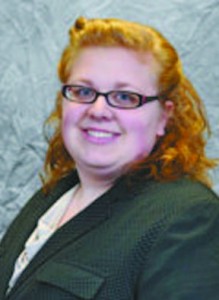June 30, 2016
Ask the Audiologist
 By Emily Steffel, Au.D., CCC-A
By Emily Steffel, Au.D., CCC-A
Audiology Consultants, P.C.
Q: What is the difference between sensorineural hearing loss, conductive hearing loss, and mixed hearing loss? Are there different treatments for
each type?
A: Sensorineural hearing loss is hearing loss that stems from either the hair cells of the cochlea (inner ear), the nerve that runs from the cochlea to the brain, or a
combination of both. Sensorineural loss is sometimes referred to as ‘permanent’ hearing loss, because there is no pill, medication or surgery that can restore the
natural hearing. Sensorineural hearing loss can be caused by many things including but not limited to:
disease processes, older age, heredity, birth defect, and noise exposure. Sensorineural hearing loss is treated by the use of hearing aids or cochlear implants.
Conductive hearing loss is hearing loss that stems from something, typically fluid, tissue, or bony growth, that blocks or reduces the incoming sound. The ‘blockage’ can involve the ear canal, the middle ear, the ear drum, or the bones in the middle ear. Conductive hearing loss is often referred to as ‘temporary’ or ‘transient’ hearing loss because often (but not always) the ‘blockage’ can be treated by either the primary care physician (PCP), or a physician who specializes in ears (an ENT). They may use medication, surgery, or a combination of treatments. Conductive hearing loss can be caused by many things including but not limited to: disease processes, heredity, birth defect, and physical trauma. Conductive hearing losses that cannot be medically remedied are treated by either hearing aids or a bone anchored hearing aid, often referred to as a Baha.
Mixed hearing loss occurs when a patient has both sensorineural hearing loss and conductive hearing loss occurring in the same ear. Treatment for the conductive component may help reduce the severity of the hearing loss but the underlying sensorineural hearing loss will remain. Treatment for mixed hearing loss includes a combination of first, medical interventions (medication and/or surgery to try to remedy the ‘blockage’) then the use of hearing aids or bone anchored hearing aids to ‘correct’ the remaining hearing loss.
Hearing aids, bone anchored hearing aids, and cochlear implants help reduce the level of difficulty a person has with hearing and communication, often quite significantly, but they cannot ‘correct’ the hearing loss all the way back to completely normal. Other than a conductive hearing loss which was fully remedied by the PCP or ENT, once hearing loss occurs a person will always have some level of difficulty with hearing in especially complex listening situations (such as in loud background noise or on the telephone). Therefore it is crucial to protect the hearing by utilizing hearing protection in loud noises such as the noise from the use of power tools, lawn mowers, snow blowers, guns, fireworks, factory machinery, airplanes, helicopters, and other such loud sounds. You have only one set of ears, take care of them.
Filed Under: Health & Wellness
Trackback URL: https://www.50pluslife.com/2016/06/30/ask-the-audiologist-49/trackback/


